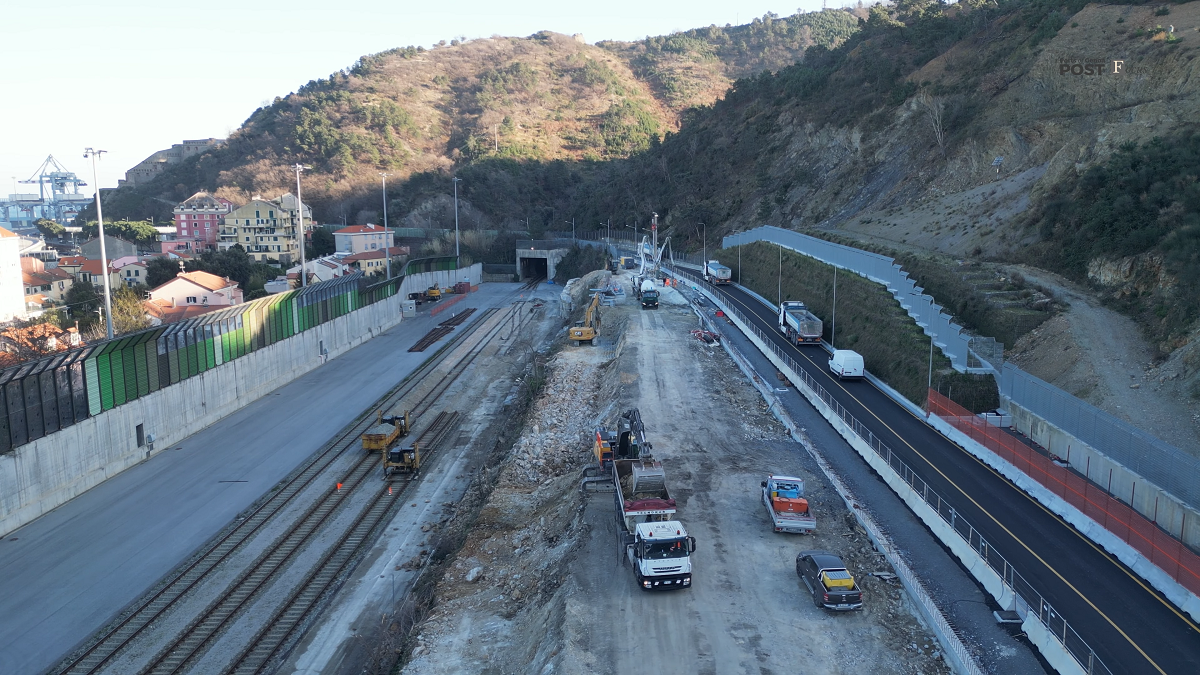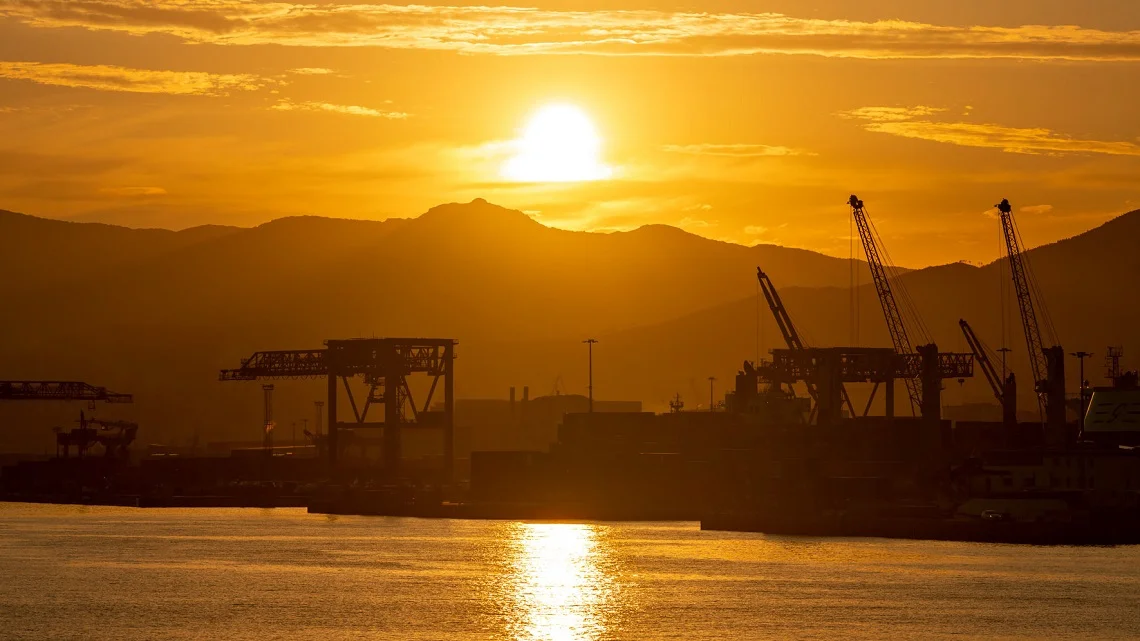
At the Ports of Genoa and Savona‑Vado, a green transformation is underway: renewable energy is being integrated with smart storage and distribution systems, electrification of the quays, intermodal logistics and digitisation. Driven by the National Recovery and Resilience Plan (NRRP) and supported by investments from the Western Ligurian Sea Port Authority, the Ports of Genoa are emerging as a cutting‑edge model of an ecological and interconnected port. In this special feature on Green Ports initiatives, we explore projects aimed at energy self‑sufficiency via smart grids, emission reductions, and enhancements to the agri‑food supply chain—centred on the hub at Vado Ligure. This port range is poised to become a beacon of modern, sustainable, and territorially integrated harbour operations—combining logistical efficiency, environmental compliancy and shared development.
Farewell to port emissions: the mission of the Ports of Genoa begins with onshore power supply
Just steps away from the residential areas of Genoa, Pra’, Savona, and Vado Ligure, cruise ships, ferries, and cargo vessels dock daily. Along with them come passengers, goods, and economic opportunities for Liguria’s premier port industry. However, they also bring atmospheric and acoustic emissions that have repercussions on the surrounding urban fabric.

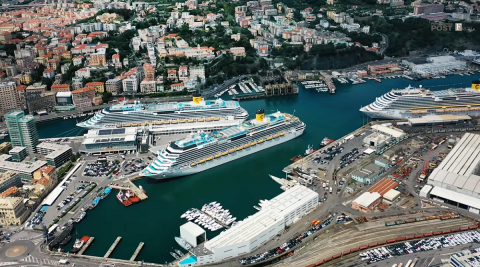
From this awareness comes the commitment of the Western Ligurian Sea Port Authority, which has launched a major quay electrification programme — Onshore Power Supply (OPS) — aimed at a sharp reduction of the negative impact of port and logistic operations.
In practical terms, the goal is to install infrastructure to supply moored ships with the electricity they need directly from the national grid (with future provision for integration into the port’s smart grid powered by solar energy), allowing ships to switch off their onboard generators. The deployment of shoreside power leads to a sharp reduction in CO₂, NOₓ, and fine particulate emissions, with a tangible improvement in air quality and overall liveability in adjacent port urban areas. This is in full compliance with EU policies on transport decarbonisation and marks an important step towards a vision for sustainable port development.
The project is at an advanced stage in Genoa. Whilst construction work continues on the secondary converter cabin — which will convert medium-voltage electricity to low-voltage power at Ponte dei Mille Ponente and Ponte Andrea Doria Levante Cruise Terminals—the design phase is already underway for an added module. This extension, funded with approximately EUR 32 million from Italy’s National Recovery and Resilience Plan (NRRP), supplements the EUR 20 million allocated for OPS under the Port of Genoa Major Infrastructure Investment Programme (Genoa Decree).
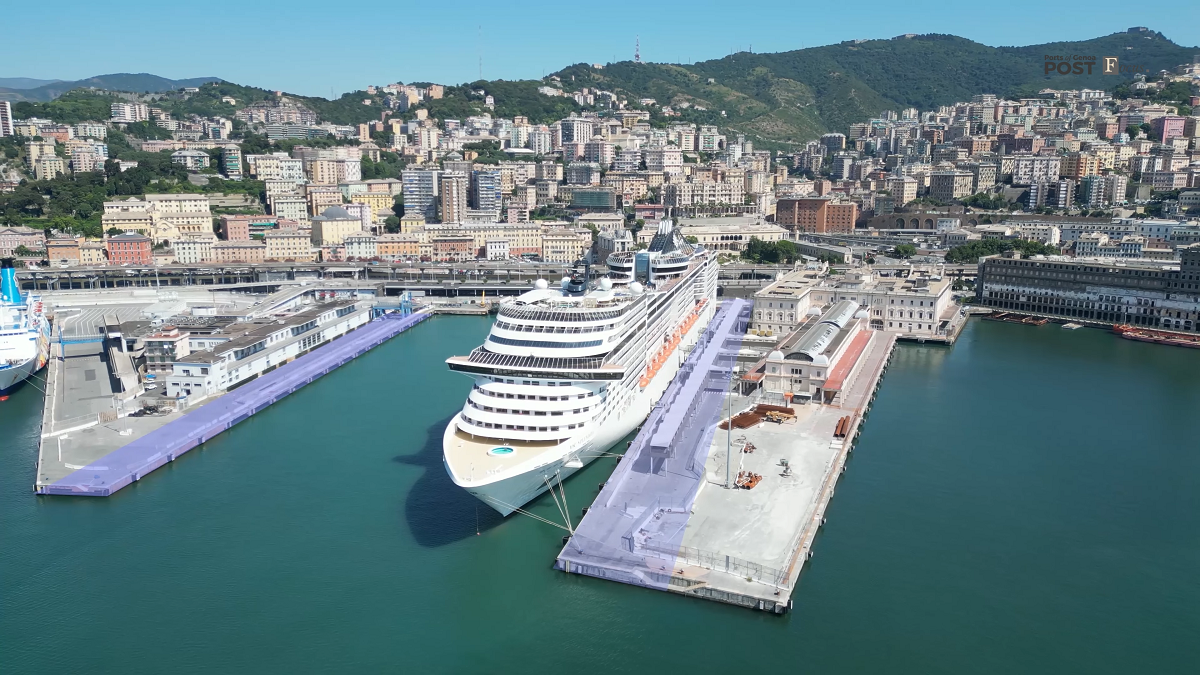
The extension will allow for the construction of a primary converter cabin capable of catering for up to 132 MW of power — about 60 MW of which will reinforce the secondary substation. This powerful and flexible facility will be able to supply electricity simultaneously to the cruise and ferry ships docking in Genoa’s Old Port, with capacity for future expansion to electrify westwards the docks dedicated to cargo traffic.
At the Genoa Pra’ container terminal, where the Levante quay has already been electrified, work is now nearing completion on the Ponente side, marking a further step forward in the port’s sustainable development. The terminal has already benefitted from a pioneering acoustic and visual environmental mitigation project relating to port activities, which culminated last April in the inauguration of the Dune Urban Park along the buffer zone of the Pra’ canal. This is a unique green space, harmoniously integrated with the terminal area.
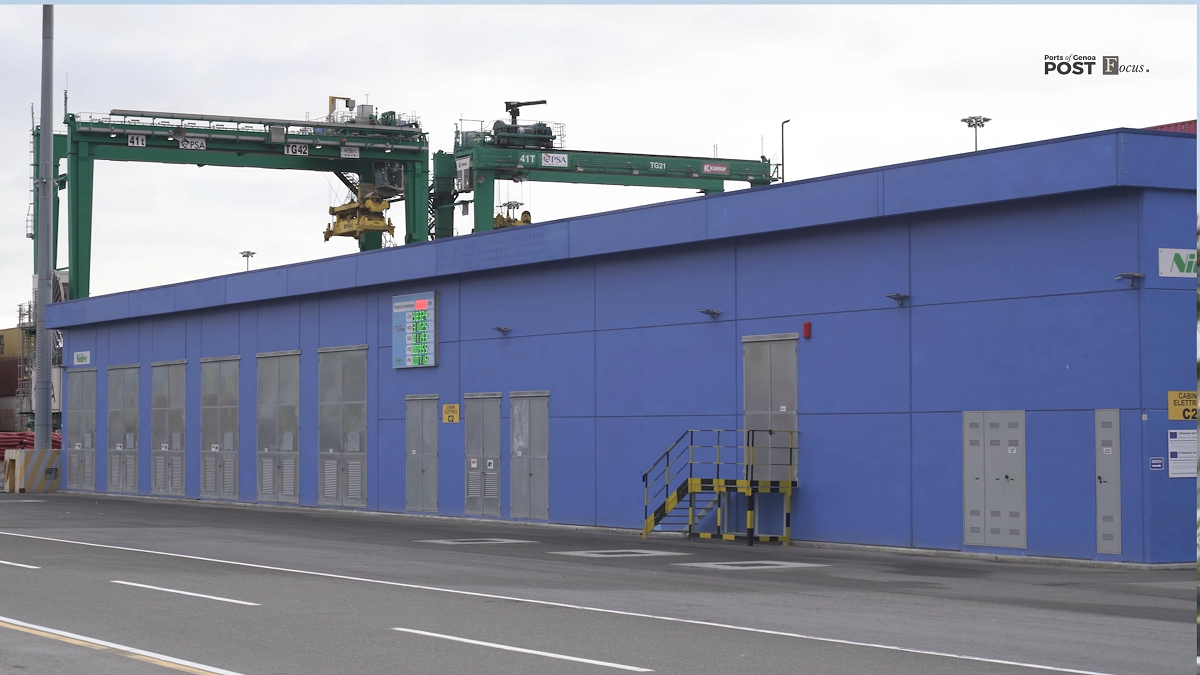
Sailing to the Port of Savona, the installation of onshore power supply for the cruise hub is underway: a state-of-the-art electrical cabin will supply power to ships moored at the quay, allowing them to switch off their engines and eliminate carbon emissions within the port. This port, nestled in the Old Dock of Savona — a vibrant, busy waterfront urban area just a short walk from the historic centre — hosts a wide range of food and retail outlets. as well as a mooring point for small-scale fishing vessels, which is the focus of a targeted redevelopment project.
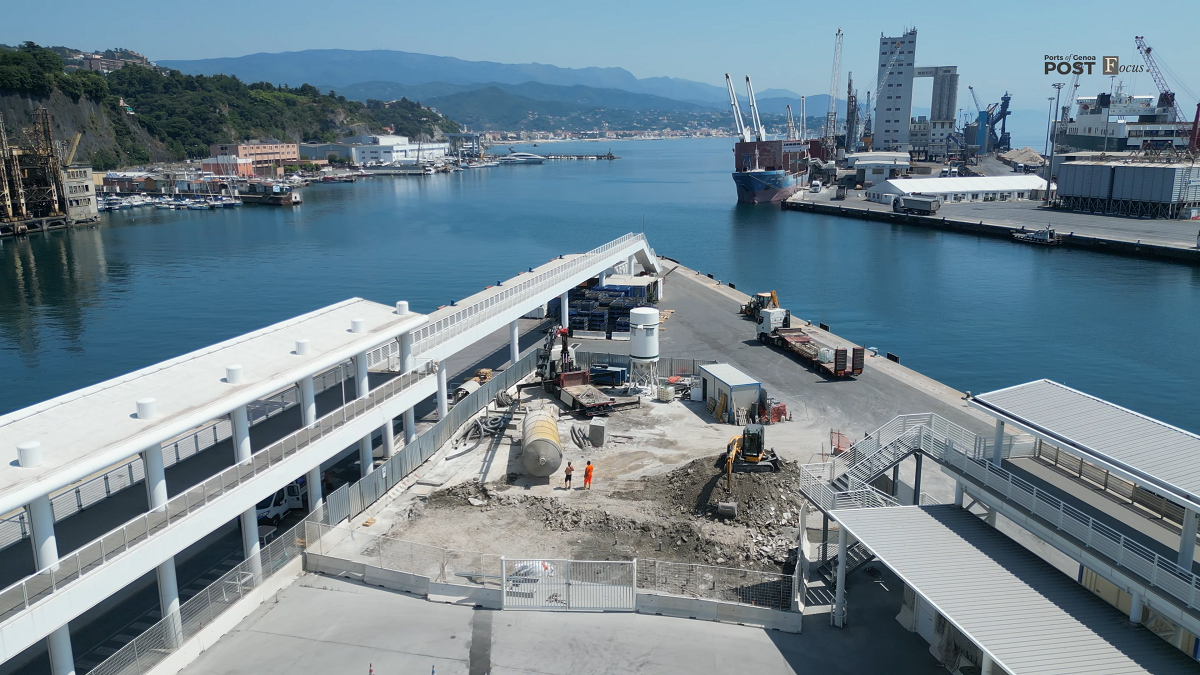
The shoreside power supply in Savona is designed to allow connection to both cruise quays, though not simultaneously. The scheduled completion date has been set for the end of 2025, with commissioning planned for the early months of 2026 — timelines that align with other ongoing projects across the basins of the Western Ligurian Sea Port Authority.
The extensive quay electrification plan also includes the Port of Vado Ligure, covering both the container and ferry terminal. At the box terminal, engineering works have been completed, and funding has already been secured for the electrical infrastructure.
The territorial and geographical context of the Ports of Genoa and Savona-Vado makes the adoption of sustainable technologies increasingly urgent. The Ligurian ports are located in close proximity to urban areas, with quays often just a few hundred metres from residential buildings. This is where the strategic vision of the Port Authority proves essential: harmonising growth in volumes with environmental protection, striking a delicate yet necessary balance between economic development and quality of life.
This is not merely an infrastructure upgrade, but a paradigm shift. A port is not an island. And a modern port can no longer focus solely on efficiency — it must also be responsible. This is why the electrification of the quays sends a strong message from the Western Ligurian Sea Port Authority to local communities, operators, and shipowners alike: a growing port is also a port that respects its surroundings.
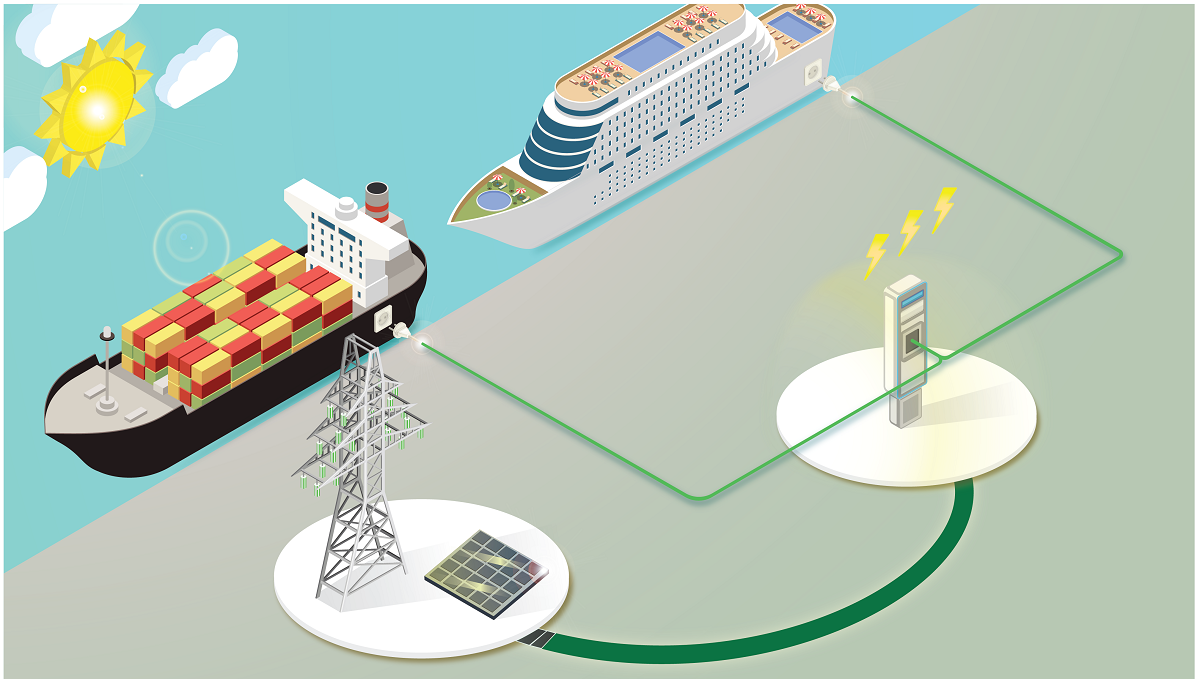
Green and technology-driven: the new energy powering the Ports of Genoa
At the Ports of Genoa, clean energy transition is no longer merely a strategic objective; it is an ongoing reality in the making. Driven by the National Recovery and Resilience Plan and funding from the Green Ports projects aimed at decarbonising logistics, the Western Ligurian Sea Port Authority has launched a range of projects worth over EUR 60 million. The goal is to generate and distribute solar energy to make the ports energy self-sufficient, starting with common user areas within the ports.
In Savona, a true smart electricity network — known as the “Port Grid” — is currently under development. It represents the beating heart of the port’s new energy hub. This system is designed to integrate the production, storage, and management of energy from renewable sources, with a strong focus on self-consumption and operational flexibility. The project involves the installation of photovoltaic panels on six large warehouses in the Savona port area, across the Terrapieno Sud zone and the 32 Alti Fondali area. Here, solar energy will be converted into electricity and stored in high-capacity lithium-ion batteries — known as BESS (Battery energy storage systems) — ensuring the supply of energy even at night or during periods of low solar radiation.
This energy will be used not only to power the Port Authority’s facilities, but also customs gates, port lighting, and public authority premises operating out of the port. In addition, in both Savona and Vado Ligure, charging stations are being installed for the E-vehicles used by the Port Authority. These charging systems will be integrated into the smart grid, thereby benefitting from energy sourced largely from renewables.
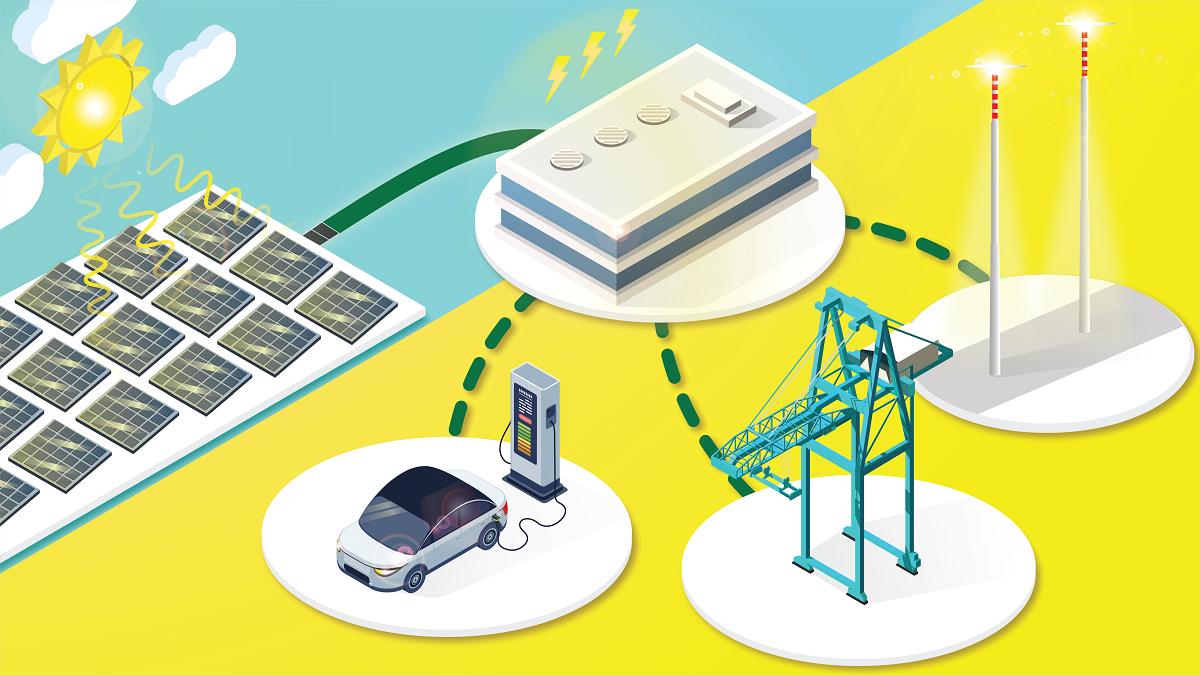
In Vado Ligure, the electrical infrastructure is already at an advanced stage, thanks to a converter substation equipped with an innovative storage system capable of ensuring continuity of supply even during maintenance or planned disconnections from the national grid. Here, the Port Authority’s objective is even more ambitious: to promote the creation of a local energy community, where energy produced on-site is pooled and shared among the businesses operating within the Simplified Logistics Zone (ZLS). This will enable a collective and efficient management of energy resources, leading to lower supply costs, greater resilience and autonomy of the local industrial network from the national grid, whilst making a significant contribution to reducing overall greenhouse gas emissions generated by port-related industries. The challenge of ecological transition is becoming a driver of economic growth and employment for the entire region.
At the Port of Genoa, the “green” plan is advancing on multiple fronts. In the cargo handling and shipyard areas of the port, new photovoltaic panels are under installation on rooftops and canopies. For instance, at the GMT warehouse near Ponte Eritrea, on the pedestrian walkways of the Assereto and Colombo ferry terminals. Additional panels will be installed in the shipyard area of Levante, both on the ORTEC warehouse rooftop — which also serves as a car park — and on the OARN building of Ente Bacini. This will result in an installed photovoltaic capacity exceeding 1,000 kWp. The energy produced at the Ports of Genoa will be used to meet the needs of the Port Authority, also thanks to a form of virtual self-consumption made possible by the latest technologies applied to energy distribution.
These measures are expected to reduce energy drawn from the national grid by approximately 40-50%. The goal is to achieve a port that is increasingly energy self-sufficient, capable of producing the majority of the energy it requires independently.
Completing the range of measures aimed at improving the overall energy efficiency of the Port of Genoa is the installation of charging stations within the port area for the E-vehicles of the Port Authority’s fleet, which is itself undergoing a comprehensive renewal with a focus on electric-powered vehicles. The charging systems will be located at the most accessible points corresponding to the Port Authority’s premises, with specific attention to the Port Inspection offices, port access gates and other strategic sites.
The overall vision of the interventions underway across the four basins is drawn from the Port Energy and Environmental Management Plan (DEASP), adopted by the Port Authority in January 2020 and updated periodically. This is a fundamental guiding document that integrates the infrastructural strategy with the requirements of the ecological transition, setting concrete targets for emissions reduction, energy efficiency, and increased use of renewable sources.
The Ports of Genoa have the energy to drive the transformation of the Western Ligurian Sea ports into a model of ecological innovation, where the operational needs of logistics merge with environmental protection and respect for the territory to generate community well-being and sustainable economic development.
Agri-food supply chain. The Vado logistics hub focuses on digitisation and intermodalism to enhance the local economy
The Port of Vado Ligure is at the heart of a series of infrastructural, technological, and digital interventions that are transforming the centre of excellence for intermodal logistics in the agri-food sector into a crucial hub in the supply chain for fruit, vegetable and food products destined for the Northern Italian and Southern European markets. The range of infrastructure projects underway are funded in part by the NRRP and the completion date is scheduled for summer 2026.
The strength of the Vado logistics hub ecosystem lies in the synergy of three key elements. The presence of highly specialised port and inland terminals for handling and managing fresh, frozen, and perishable products from around the world; the operational capability to integrate different modes of transport into a seamless cycle; and the optimisation of cargo intake and distribution processes through advanced technological and IT systems for automation and cargo tracking.
Today, these foundations become the springboard for a step change thanks to four complementary projects, with a total value exceeding EUR 30 million, carried out by the Western Ligurian Sea Port Authority. The aim is to increase the port’s operational capacity and strengthen its role in the agri-food supply chain by attracting private investment to the area. All this while reducing road congestion and the environmental impact of road transport.
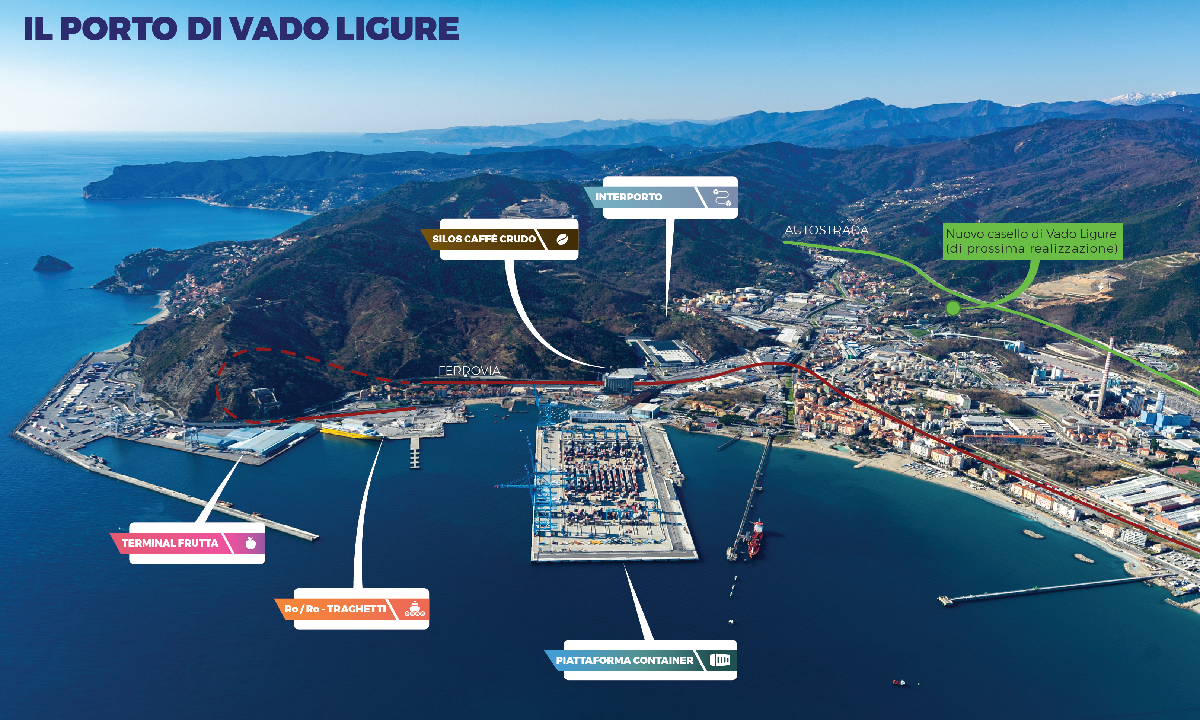
More rail, fewer emissions: the green revolution starts on the tracks
The first project calls for the expansion of the rail terminal at the Port of Vado Ligure, with the addition of a new track (increasing from three to four) and provisions for electric gantry cranes. An infrastructure designed to shift at least 40% of freight from road to rail, reducing pressure on the local and regional road network, as well as improving the efficiency of loading and unloading operations. This project ensures full integration between the dedicated road ramps of the hub and the hinterland national rail network, expanding the catchment area of the Port of Savona-Vado well beyond national borders.
This project is further strengthened by the first of three projects funded by NRRP through the Ministry of Agriculture and Food Sovereignty (MIPAAF) for the logistical development of the agri-food sector. The intervention involves the lengthening and optimisation of existing tracks, a solution that increases loading capacity and improves shunting operations. The result: increased capacity and flexibility in cargo handling, with quicker and safer manoeuvring times. The works, currently underway, have completed the first part of the railway track installation on the tunnel side at the entrance to the port basin of Vado Ligure, while the second part of the port railway infrastructure enhancement on the green coffee silo side is nearing completion.

Interventions like these not only enhance environmental performance, but also increase the overall reliability and efficiency of the port, a crucial factor for operators in the agri-food supply chain managing delicate products such as fruit, vegetables and frozen goods, for which timely delivery and traceability are key competitive advantages.
Automation and digital technology: a smart platform serving the agri-food supply chain
The development of intermodalism is complemented by the enhancement of technological and digital infrastructure, achieved through the combined action of the remaining projects funded by the NRRP under the agri-food supply chain support fund, with a total value exceeding EUR 9.5 million.
These interventions introduce advanced automation in the rail terminal through a centralised computer system capable of monitoring track occupancy in real time and automatically managing the switches. A solution that reduces dwell and shunting times, enhances safety, and minimises the environmental impact caused by secondary locomotive movements.
Completing the digital infrastructure programme are the installation of six technological gateways for the automatic reading of container codes and the transmission of data to customs and security control systems, as well as the upgrading of the “Faro” road gate, currently used only in emergency situations. This digital infrastructure will enable accurate tracking of cargo flows and optimise control and sorting processes.
In parallel, the AdSP has also completed the works on the railway embankments adjacent to the tunnel entrance of the Vado Ligure port basin, a preparatory intervention for the activation of the new tracks and the improvement of the overall safety of the rail yard.
The combination of these projects, strongly focused on sustainability and digitisation, not only strengthens the competitive role of the Port of Vado Ligure within the European freight transport landscape, but also makes a tangible contribution to the qualitative growth of the Italian agri-food supply chain, ensuring reliable timings, full traceability and high standards in the handling of fresh and perishable products.
A logistics hub that generates value for the local community, employment and the environment
The benefits of the infrastructure works implemented by the Ports of Genoa extend beyond operational efficiency. The new layout of the Port of Vado Ligure makes the terminal even more appealing to companies and businesses who find a modern, competitive, and sustainable logistics hub in Vado. A concrete example of this are the investments already completed, such as the large green coffee storage facility, refrigerated warehouses for fruit and vegetable products, and integration with the VIO inland terminal dedicated to frozen goods.
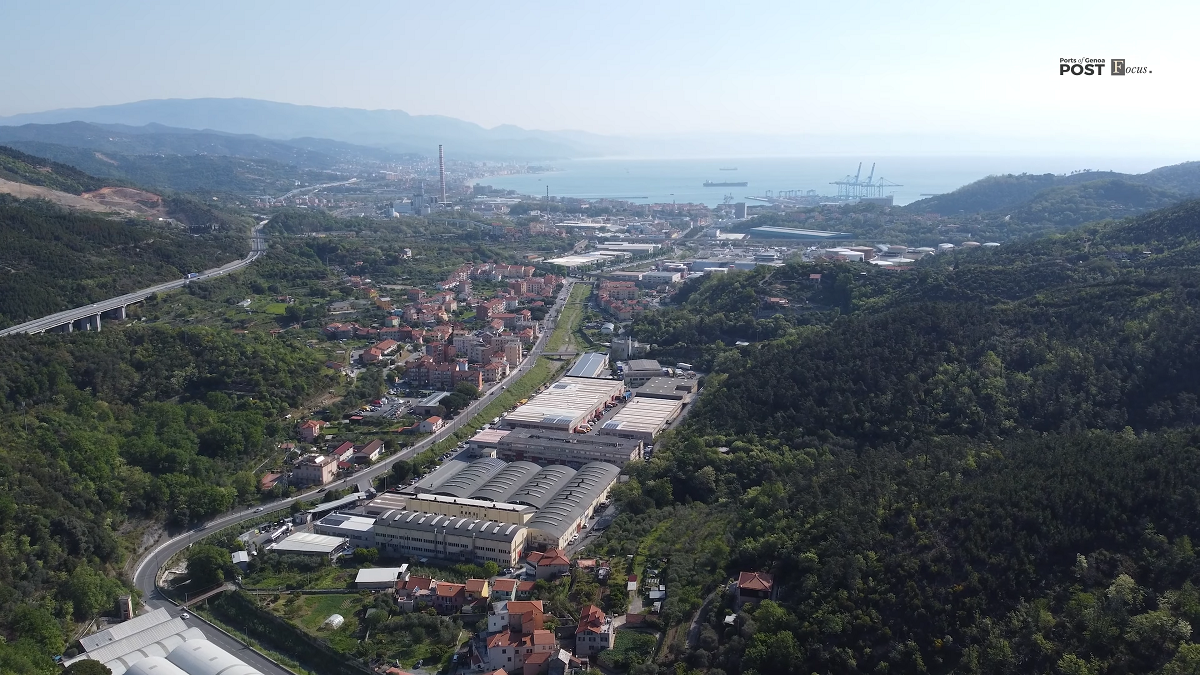
Furthermore, a direct connection with the national railway network and the leading manufacturing and consumer markets of Northern Italy and Central Europe expands the catchment area of the port, encouraging the establishment of new companies in the agri-food and logistics sectors in the surrounding areas, with positive impacts on employment, services and the socio-economic development of the local Savona-Vado community.




